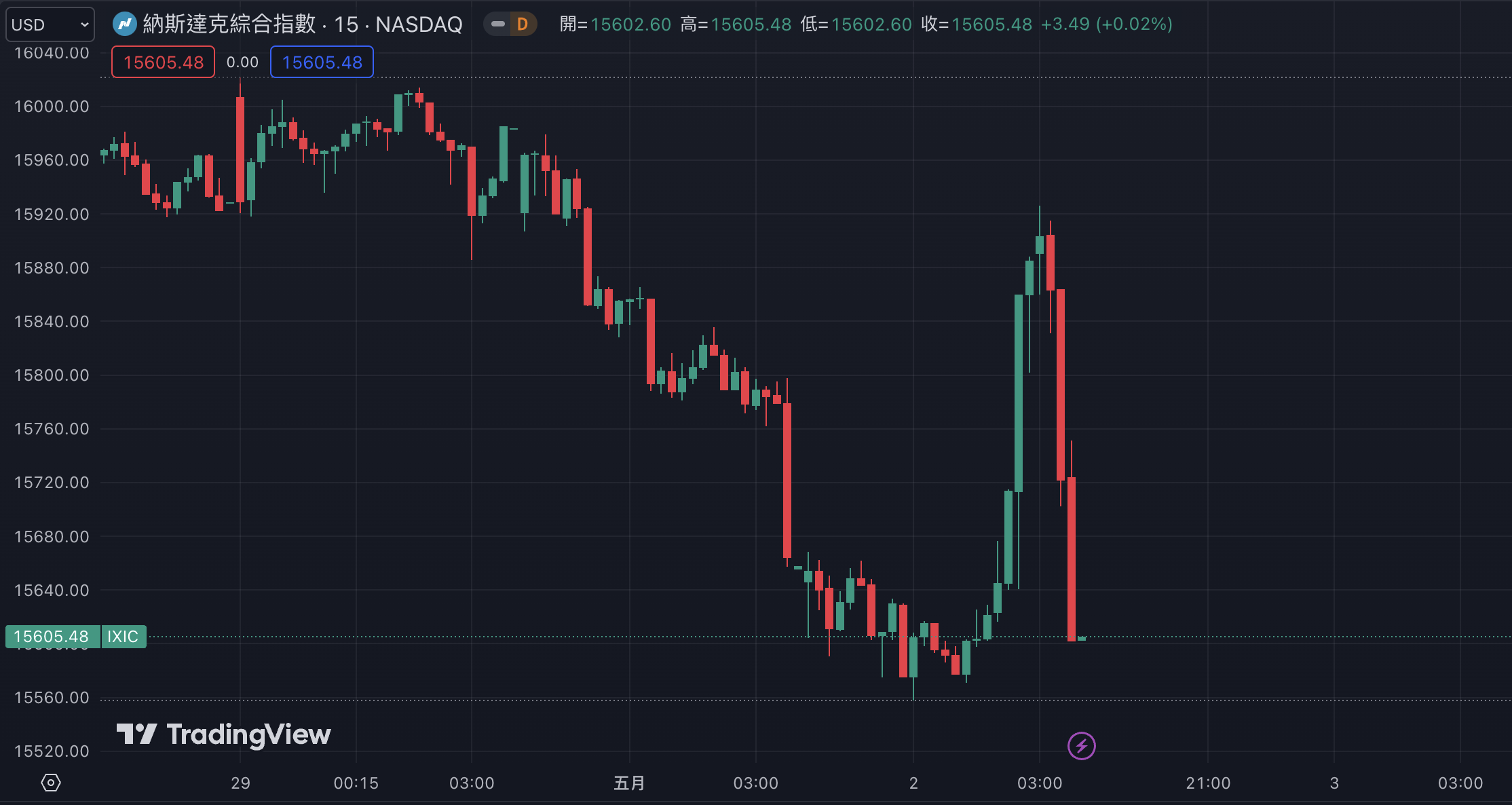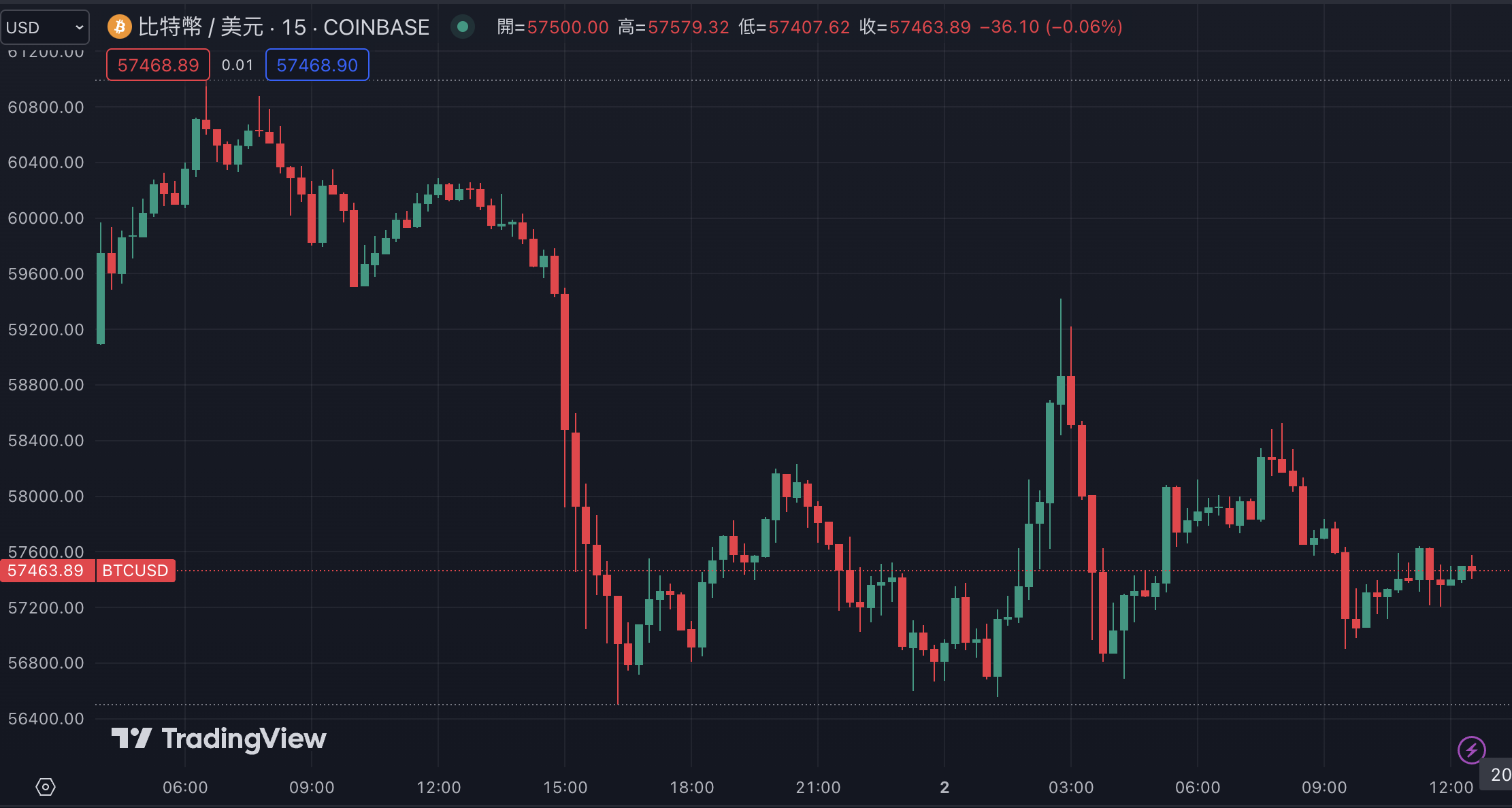At 2 o'clock this morning, the US Federal Reserve (Fed) announced that it would keep the overnight benchmark interest rate unchanged at 5.25% to 5.5%. Chairman Jerome Powell said frankly at the press conference after the meeting: As far as interest rate cuts are concerned, the Confidence will take longer than originally expected, and it is unclear when the central bank will have enough confidence to start cutting interest rates. In addition, Powell sent a dovish signal, making it clear that the Fed's next move is unlikely to be to raise interest rates.
The Nasdaq index rose first and then fell due to the impact of AI stocks
Against this background, the four major U.S. stock indexes had mixed gains and losses, with the Dow Jones Index rising by more than 530 points at one point, and finally closing up by 87.37 points. In contrast, the Nasdaq index fell before the interest rate decision and was affected by Ball's dovish remarks after the meeting. It rose to 15926.22 points at 3:00 in the morning, but then fell back and finally closed down 52.34 points at 15605.48. point.
In the Nasdaq Index, AI stocks performed the worst, especially dragged down by AMD (American Advanced Micro Devices) and SMCI (Super Micro Computer). The share prices of these two companies fell 8.91% and 14.03% respectively.

AMD and SMCI revenue outlook is lower than market expectations
AMD and SMCI fell sharply because they failed to meet investors' optimistic expectations for the AI market, resulting in significant selling pressure. AMD announced its financial report yesterday (1). Its first-quarter revenue was similar to market expectations. However, its second-quarter revenue is expected to increase by 6% year-on-year to US$5.7 billion, which is only roughly in line with Wall Street’s original estimate of US$5.72 billion. US dollars, although the full-year AI chip revenue forecast has been revised upward from the previous US$3.5 billion to US$4 billion, it is far less than the US$8 billion that some investors optimistically expected.
SMCI announced its financial report on the 30th. Although its first-quarter profit was better than expected, it raised its full-year forecast, and its revenue increased by 200%, it was affected by the shortage of components and could not meet the 206% of market expectations. The gross profit margin is lower than the same period last year. In addition, Chief Financial Officer Wei Gande predicts that the gross profit margin will decline quarter-on-quarter this quarter, raising doubts about the profitability of new server products, thus triggering a decline in the stock price.
Is Bitcoin Price Closely Correlated to AI Stocks?
It is worth noting that the price trend of Bitcoin in the early hours of this morning was very similar to that of the Nasdaq Index. They both fell before the interest rate decision was announced, continued to rise until 3 am after the announcement, and then plummeted again soon after. , almost all gains were given back. As of the closing time of US stocks, Bitcoin fell 3.89% in the past 24 hours.
This move reveals the close correlation between Bitcoin and the Nasdaq Index and AI stocks such as AMD and SMCI. In particular, SMCI's sharp drop on March 14 also coincided with Bitcoin's plunge, which further illustrates the linkage between Bitcoin and AI stock market sentiment.
Judging from Bitcoin’s gains this year and its all-time high, the main drivers of its price fluctuations may include the gains brought about by the introduction of one-time spot ETFs and the short-term spillover effects of AI-themed funds.
Looking to the future, Bitcoin currently has spot ETFs, and the investment risk spectrum in the United States is similar to that of high-risk technology stocks. Therefore, it is speculated that in the short term, if the market bubble of AI stocks continues to burst, the price trend of Bitcoin may remain sluggish, and may even decline. Space. In the medium to long term, Bitcoin's price fluctuations may rebound within one to two years after the halving, as the market fully adjusts and the potential benefits of the halving are realized.






